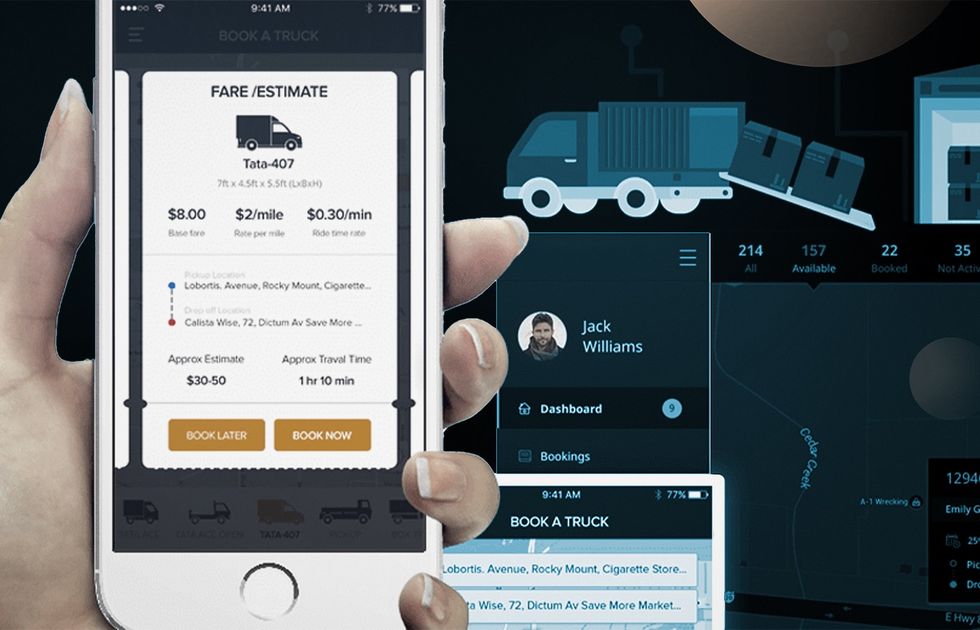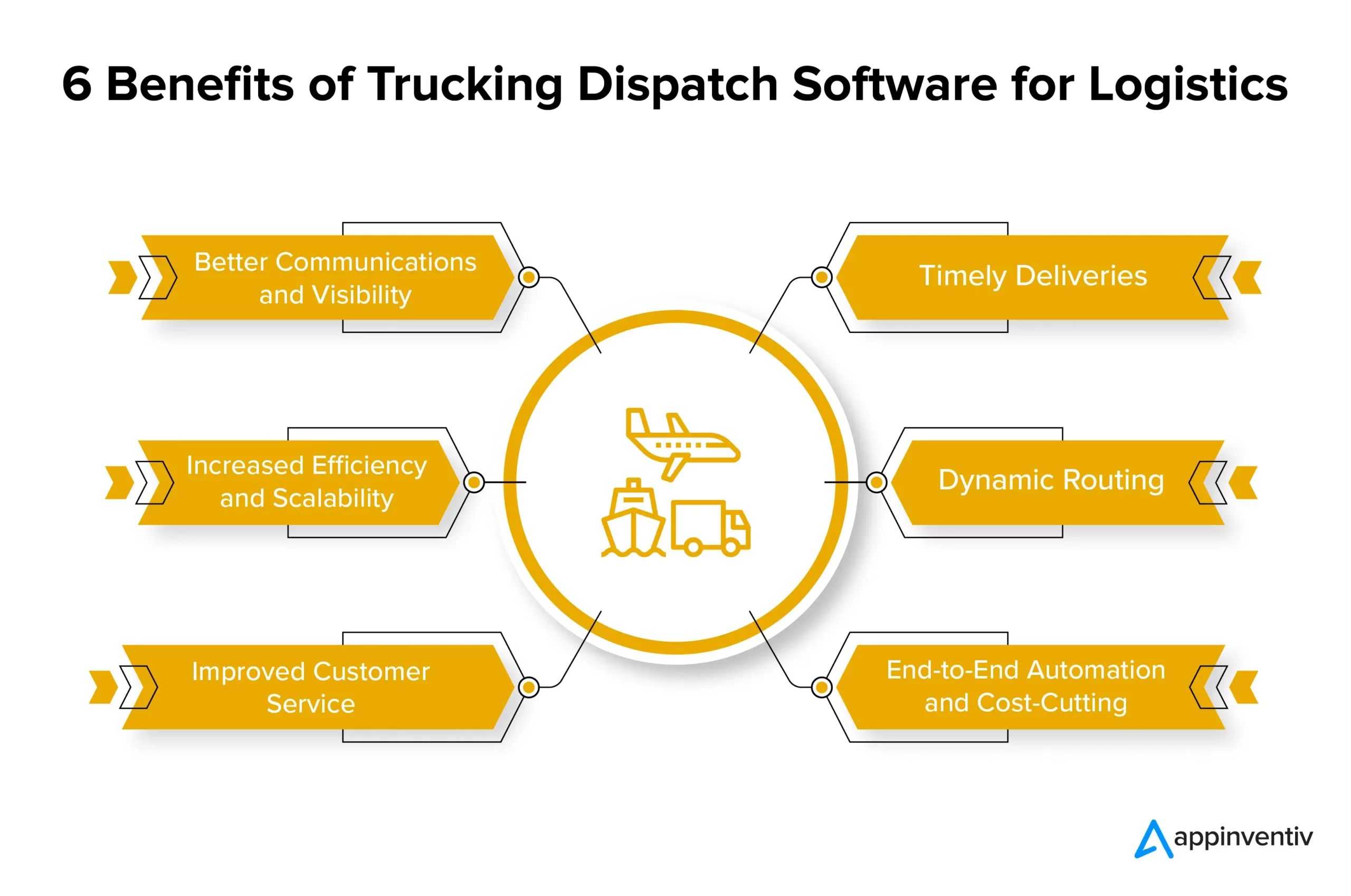Integrating trucking dispatch software with third-party logistics (3PL) systems presents challenges, such as data privacy and security, costs, and complexity. However, investing in a customized trucking dispatch software solution can solve these logistical issues and improve efficiency.
With this solution, businesses can optimize delivery routes, improve fleet efficiency, and enhance customer satisfaction. By addressing these challenges, logistics companies can achieve seamless delivery management and drive business growth.

Credit: koerber-supplychain.com
Challenges In Integrating Trucking Dispatch Software With 3pl Systems
Integrating trucking dispatch software with third-party logistics (3PL) systems comes with its fair share of challenges. From data privacy and security concerns to costs and complexities, logistics companies often face multiple obstacles in achieving a seamless integration. In this article, we will explore the main challenges that arise when implementing trucking dispatch software with 3PL systems and discuss possible solutions.
Data Privacy And Security
Data privacy and security are critical aspects when integrating any software system, especially when dealing with third-party logistics. The sensitive nature of shipment details, customer data, and financial information require robust security measures to prevent unauthorized access, data breaches, or cyber attacks. Logistics companies need assurance that their information is protected throughout the integration process and beyond.
To address this challenge, it is essential to prioritize data encryption, implement multi-factor authentication, and regular security audits. Establishing data privacy policies and ensuring compliance with industry-standard security regulations offer additional layers of protection. Collaborating with experienced software providers who prioritize data security can significantly reduce the risks associated with integrating trucking dispatch software with 3PL systems.
Costs And Complexity
Integrating trucking dispatch software with 3PL systems can be a complex and expensive process. It involves investing in the right technology, training personnel, and sometimes making changes to existing systems. Additionally, there may be a need to customize the software to meet specific business requirements.
To mitigate these challenges, it is crucial to carefully evaluate and select software providers who offer scalable solutions. Conducting thorough cost-benefit analyses helps in understanding the long-term value of the integration and the potential return on investment. Choosing software with a user-friendly interface and providing comprehensive training to employees can also streamline the integration process.
Developing A Roadmap
Implementing trucking dispatch software with 3PL systems requires careful planning and a well-defined roadmap. Without a clear strategy in place, logistics companies may face delays, miscommunication, and inefficient integration.
To tackle this challenge, it is essential to develop a detailed roadmap that outlines the integration process, identifies key milestones, and allocates resources accordingly. Conducting regular progress assessments and making adjustments as necessary will help keep the integration on track. Collaborating with experienced software providers who have a track record of successful integrations can also provide valuable guidance in developing an effective roadmap.
Delivery Time Constraints
Delivery time constraints pose a unique challenge when integrating trucking dispatch software with 3PL systems. Coordinating shipments, optimizing routes, and ensuring timely deliveries are crucial for logistics companies to maintain customer satisfaction and meet service level agreements.
To address this challenge, implementing trucking dispatch software with advanced route optimization capabilities can significantly improve efficiency. Automating processes such as load assignment, driver assignment, and real-time tracking can help reduce delivery times and minimize errors caused by manual intervention.
Route Optimization
Efficient route optimization is essential for logistics companies to minimize fuel costs, reduce vehicle wear and tear, and enhance overall productivity. Integrating trucking dispatch software with 3PL systems should include features that enable optimized routing based on factors such as traffic conditions, delivery deadlines, and load capacity.
To overcome this challenge, logistics companies should consider adopting software solutions that offer advanced route optimization algorithms. These algorithms take into account various parameters to calculate the most efficient routes, reducing fuel consumption and improving delivery times.
In conclusion, integrating trucking dispatch software with 3PL systems requires careful consideration of challenges such as data privacy and security, costs and complexity, developing a roadmap, delivery time constraints, and route optimization. By addressing these challenges and implementing suitable solutions, logistics companies can unlock the benefits of seamless integration, increased efficiency, and improved customer satisfaction.

Credit: www.cleo.com
Solutions For Integrating Trucking Dispatch Software With 3pl Systems
Integrating trucking dispatch software with third-party logistics systems presents challenges and solutions for optimizing operations. By investing in customized dispatch software, businesses can improve efficiency, solve logistical problems, and streamline delivery schedules.
Investing In Customized Trucking Dispatch Software
Investing in a customized trucking dispatch software solution is essential for solving all logistical problems and improving efficiency. A customized software solution can be tailored to match the specific needs of your business, allowing you to streamline your operations and optimize resource allocation. With customized software, you can easily manage and track your shipments, allocate drivers, and monitor their performance. This will not only enhance your overall productivity but also contribute to cost savings and improved customer satisfaction.
Improving Driver Performance
To address the challenges faced in integrating trucking dispatch software with 3PL systems, it is crucial to focus on improving driver performance. By utilizing advanced technologies and driver management tools, you can monitor driver behavior, track their performance metrics, and provide real-time feedback and coaching. This will help in enhancing driver efficiency, reducing accidents and delays, and promoting better compliance with industry regulations. Improved driver performance will not only optimize your operational efficiency but also contribute to better customer satisfaction and retention.
Enhancing Customer Satisfaction
Another crucial aspect of integrating trucking dispatch software with 3PL systems is to enhance customer satisfaction. By utilizing the capabilities provided by the software, you can provide your customers with real-time updates on their shipments, accurate estimated time of arrival (ETA), and proactive notifications in case of any delays or changes. Additionally, you can integrate your software with customer feedback systems to gather valuable insights and continuously improve your service quality. Enhanced customer satisfaction will lead to increased customer loyalty and positive word-of-mouth, driving long-term business growth.
Driving Business Growth
Integrating trucking dispatch software with 3PL systems is not just about solving current challenges but also about driving business growth. By leveraging the capabilities of the software, you can gain better visibility into your operations, make data-driven decisions, and identify potential areas for improvement and expansion. You can analyze key performance indicators (KPIs) related to driver efficiency, resource utilization, customer satisfaction, and financial performance to identify gaps and implement targeted strategies. This will ultimately help you achieve sustainable business growth and stay ahead in the competitive market.
Utilizing Transportation Management Systems
One of the most effective solutions for integrating trucking dispatch software with 3PL systems is to utilize transportation management systems (TMS). TMS can provide centralized control and visibility over your logistics operations, allowing you to optimize routes, allocate resources efficiently, and track shipments in real-time. By integrating your trucking dispatch software with TMS, you can seamlessly exchange data and automate processes, eliminating manual errors and reducing administrative overhead. This integration will result in improved operational efficiency, reduced costs, and enhanced collaboration with third-party logistics providers.

Credit: appinventiv.com
Frequently Asked Questions Of Challenges And Solutions For Integrating Trucking Dispatch Software With Third-party Logistics (3pl) Systems
Which Of The Following Is A Common Challenge Faced By 3pls?
A common challenge faced by 3PLs is the need to improve communications and become customer-centric for stable business processes and operations. It is important for 3PLs to revisit financial and marketing plans in order to deliver what the customers need.
How A 3pl Can Help Overcome Logistics Challenges?
A 3PL can help overcome logistics challenges by providing agility, stability, restructuring, innovation, and value addition to business processes and operations. With their expertise and resources, they can assist in revisiting financial and marketing plans, improving communications, and becoming customer-centric.
Additionally, investing in a customized trucking dispatch software solution can solve logistical problems and improve efficiency.
What Are The Risks In Using A Third Party Logistics Service Providers?
Using a third party logistics service provider carries risks including data privacy and security, increased costs and complexity, and challenges in integrating their services into existing operations. Trucking dispatch software can help solve logistical problems and improve efficiency.
Which Of The Following Is A Potential Drawback Of Using A Third Party Logistics Provider 3pl )?
One potential drawback of using a third party logistics provider (3PL) is the risk of data privacy and security challenges. These challenges can include potential breaches of confidential information and sensitive data, which can have detrimental effects on a business’s reputation and operations.
Conclusion
To successfully integrate trucking dispatch software with third-party logistics (3PL) systems, companies need to address several challenges. These challenges include data privacy and security concerns, the costs and complexity of implementation, and the need to develop a roadmap for integration.
However, by investing in a customized trucking dispatch software solution, businesses can overcome these obstacles and improve efficiency in their logistical operations. This solution will not only solve logistical problems but also optimize delivery schedules, plan efficient routes, and ultimately enhance overall fleet efficiency.
With the right trucking dispatch software, companies can address these challenges head-on and achieve seamless delivery management.



